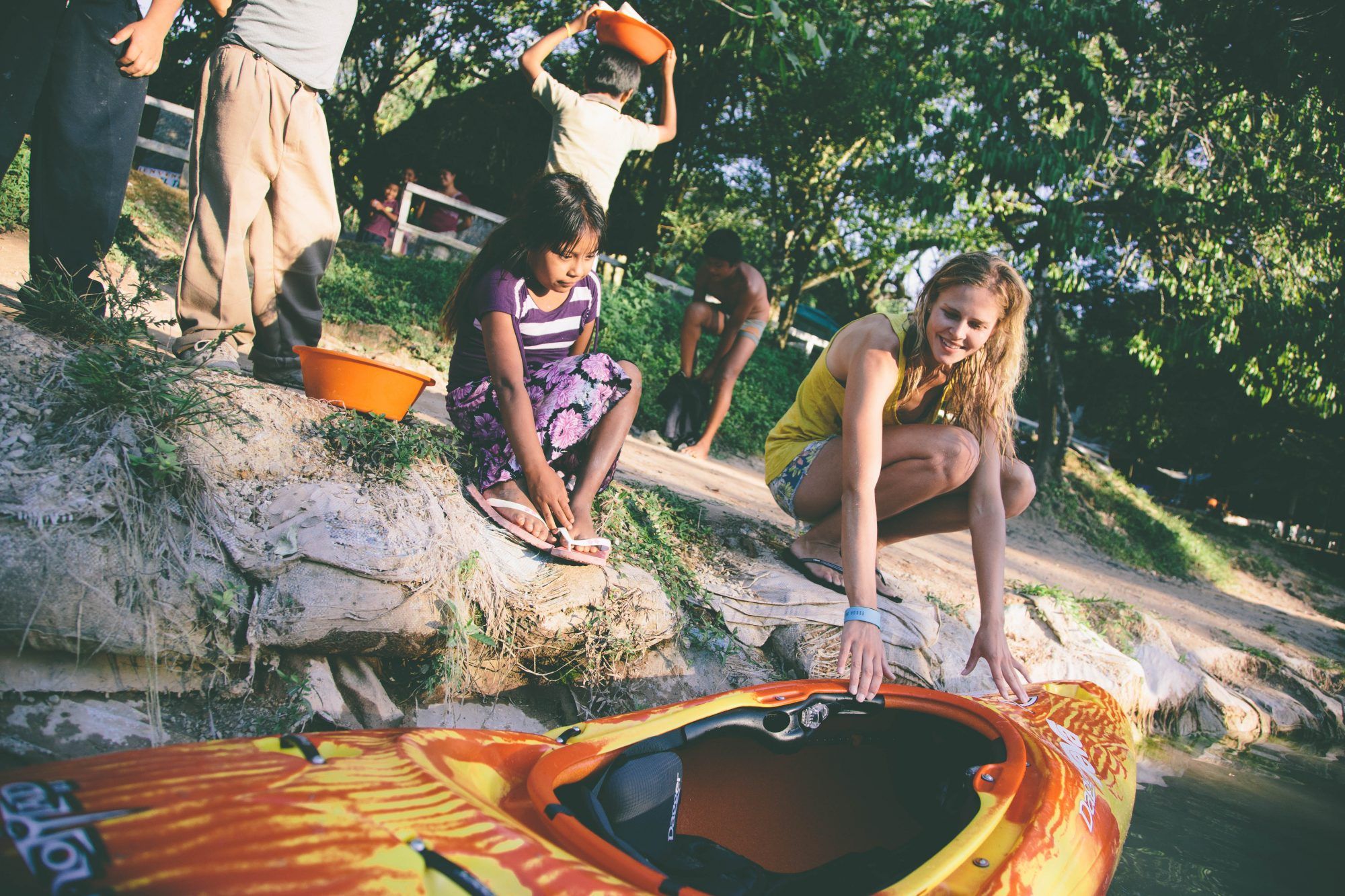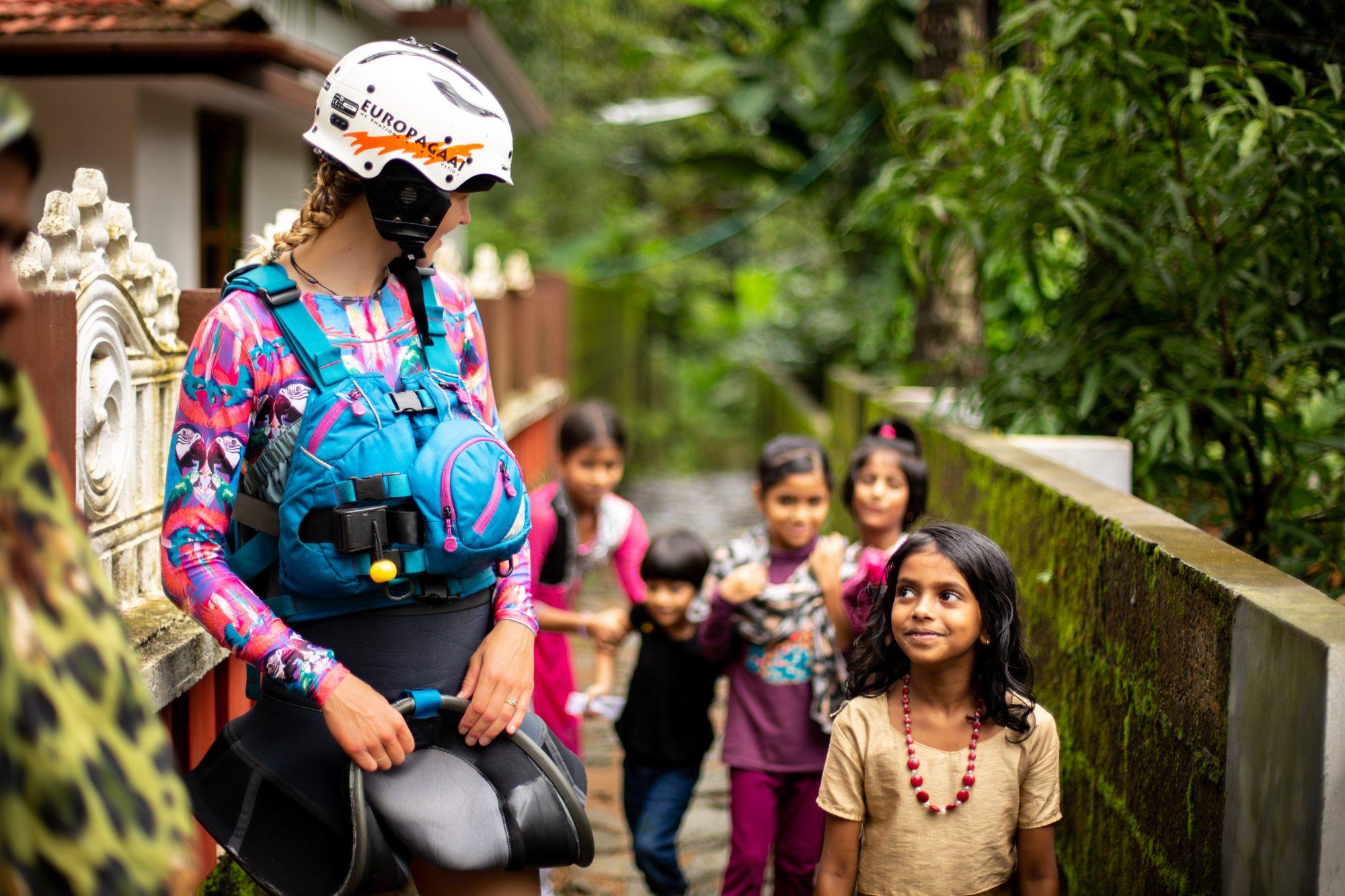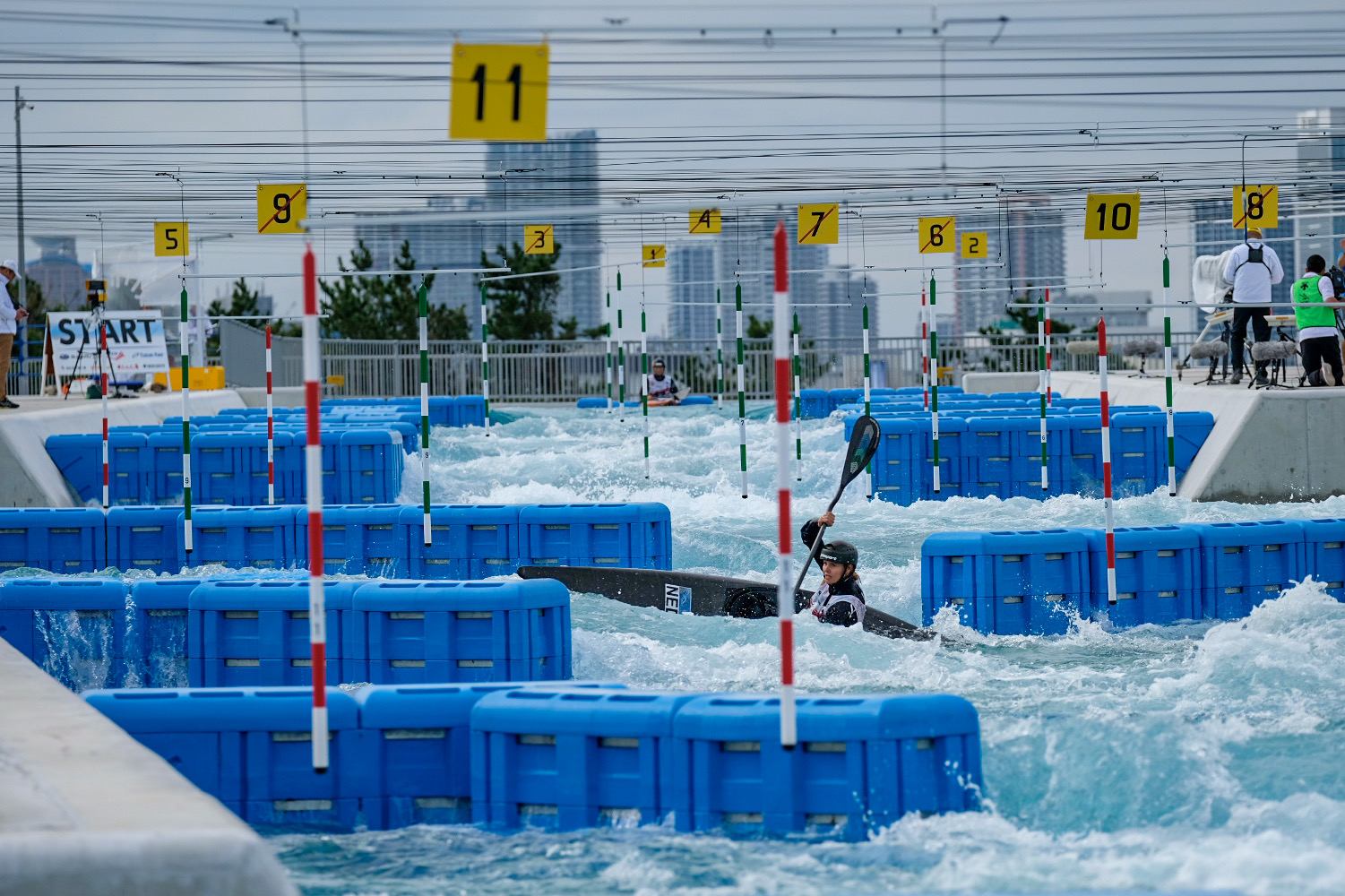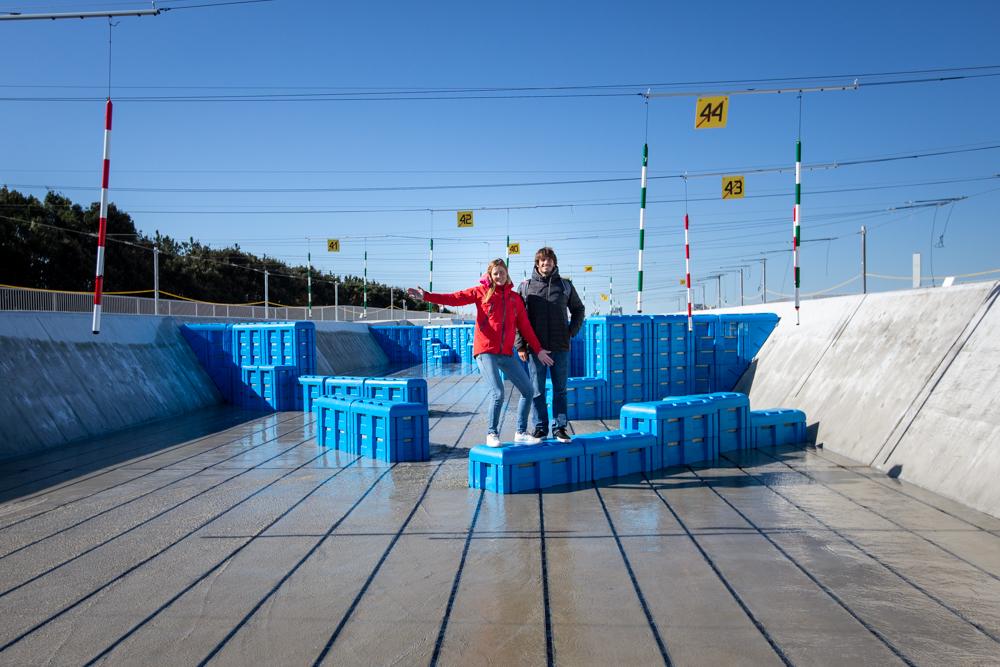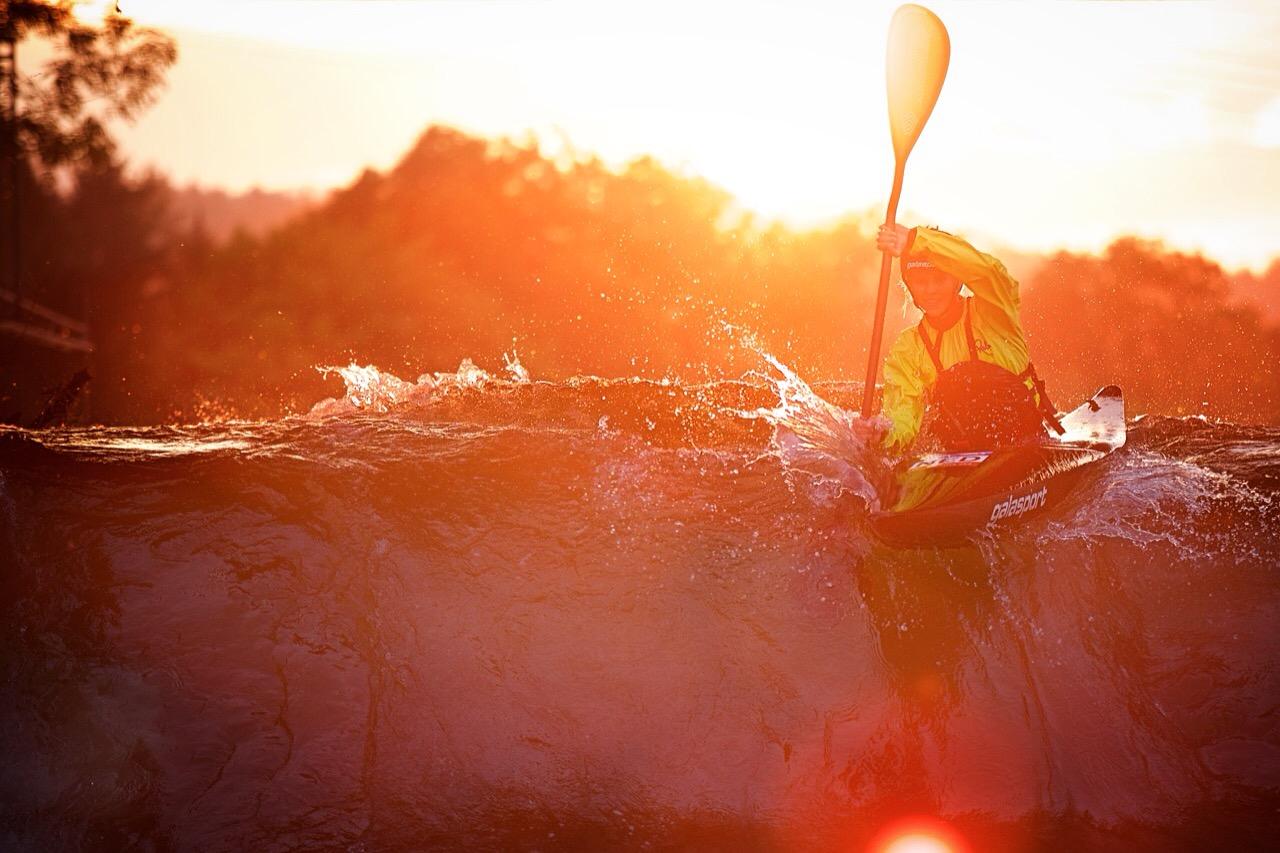Five years ago I was exploring the world, paddling rivers far away from artificial whitewater courses of canoe slalom. In September 2019, I qualified for the Olympic Games in Tokyo (something I thought was impossible)! And, even harder to predict, the delay of the summer Olympics until 2021. Planning remains key to my ability to compete when the time comes.
My paddling expeditions have provide me the opportunity to witness and enjoy the most beautiful rivers, places and people on the planet and I am stoked with every single moment of it and cherish a million of unforgettable memories!
Changing to the realm of canoe slalom I had to start as a beginner. I’m extremely stoked that my hard work is paying off and that I have the opportunity to represent the Netherlands at the Olympic Games, especially coming from a total different background and taking a total different path than most of the slalom Olympic representatives.
For four years I had no coach and no idea. I was often just paddling by myself having fun on the river. This year I have been backed up by the Dutch Canoe and Olympic Federation, which allowed me to recruit a coach. Having a coach on the bank has been a game changer but it has also made me proud of how far I got and my achievements prior to this.
To become a canoe slalom paddler I had to shift my lifestyle. An elite canoe athlete has to put in thousands of hours of training on different whitewater courses, practicing thousands of different gate combinations. There are so many skills to learn and drills to repeat.
Last year I wrote a series of blog posts about different aspects of training. Having some more insights each year on these topics, I will delve a bit deeper into them with some more specifics. This first write up is about how to plan your training.
Planning training – ‘Failing to plan, is planning to fail’
As the winter sun begins to set ever earlier and the end of another season is upon us, it’s time to plan for the next. The purpose of a training plan is to identify what work needs to be done to achieve your objectives. More than simply building strength or endurance, effective programs are based on sport-specific demands. A training plan helps you target a race, but also helps you to stay motivated to work out regularly.
I recommend being flexible with your plans in order to alleviate anxiety, and also being realistic about how much training you will be able to fit into your everyday life. Devising a training plan which is realistic and personal rather than using one taken off the internet or followed by a friend. You need to schedule when you have the time to train around your current commitments, so training stays a pleasure and not a chore.
Where to start?
Start with the date of your most important competitions or perhaps your biggest expedition of the year where you want to be top fit (Indus, Stikine or a first-D mission!) and work your way back to the present.
Periodisation
Organising your training year into phases where each phase has its own aim for development athleticism is known as periodisation. It’s a long-term plan that includes training phases (for example, conditioning, intensive work, in-season maintenance and recovery), which is as specific with the types of training activities as you can be.
Make a year calendar with a rough overview of all the races, expeditions, river trips, teaching etc that you want to attend and when you want to be on your peak performance. I have attached an example. You can colour-code the different training phases – for example, race tapering, building block, recovery etc. (The example below is quite blank, ideally you will have the whole year planned out)
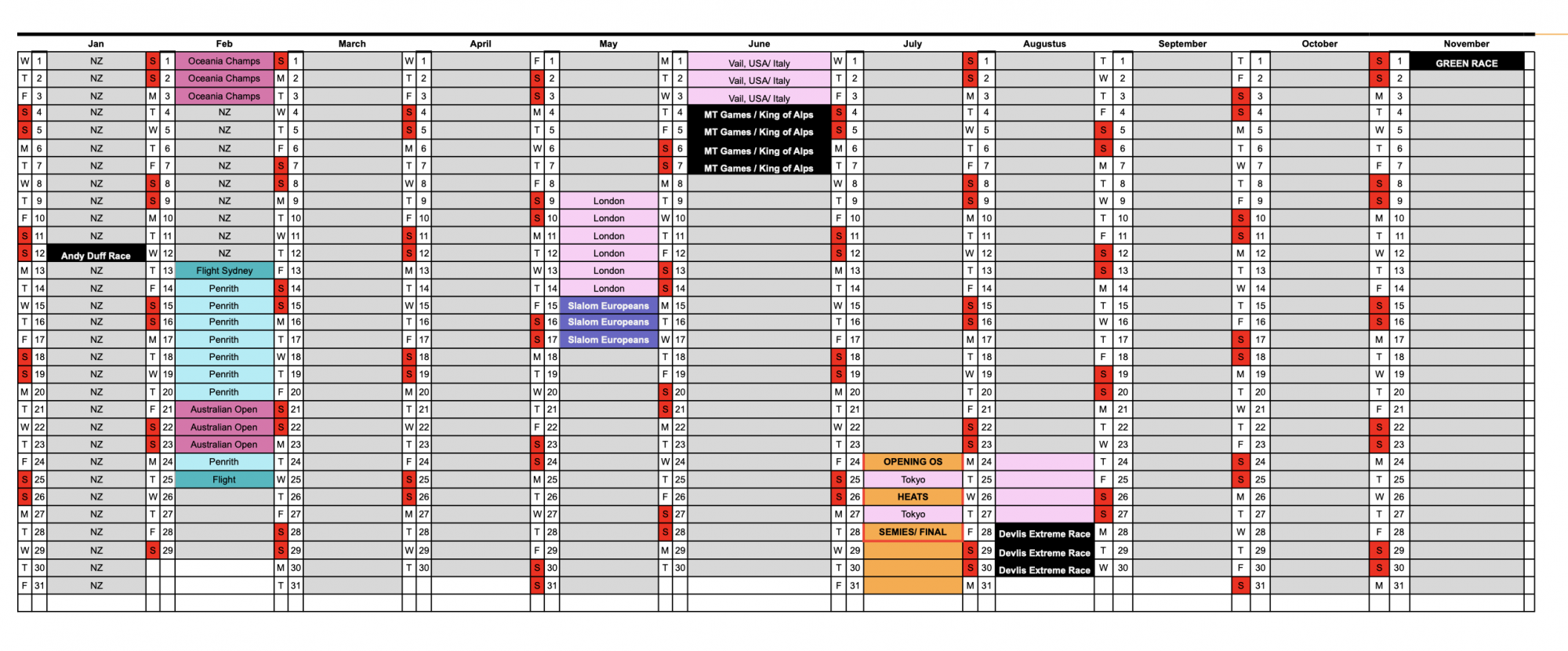
Once you have your year overview the next step is to break it down into smaller goals, your phases and write down the aim of the training block – for example aerobic work, strength building, race preparation and so on. Here you can write down a day-by-day breakdown of the sessions you want to do. You can fill in the intensity of your weeks to keep an overview in the long term. It is important to write down your objectives, so you know what you want to work on and be focused on.
A good way to break down your week training is to think about what your most important session of the week is and work around this. So you have done a bit of work before but not coming into it too tired. It’s also better to separate strength and aerobic trainings on different days or at least have more than six hours between them.
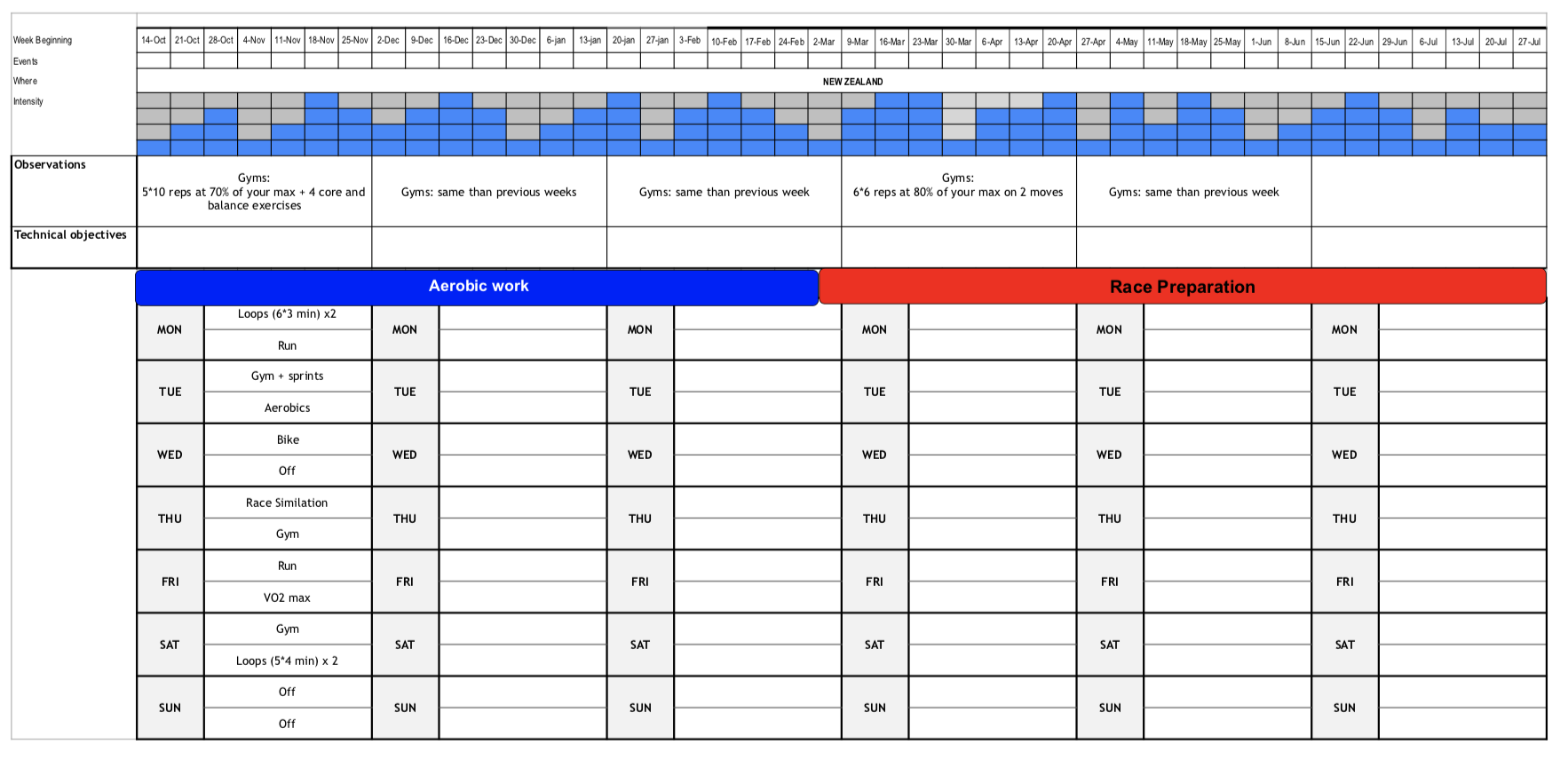
If you try to do too much, you’ll become stressed about fitting it in. And if you feel you have to stick rigidly to a plan that’s not compatible with your commitments, you’ll worry when life gets in the way of training. Being flexible and realistic will mean you stay happy, content and motivated.
